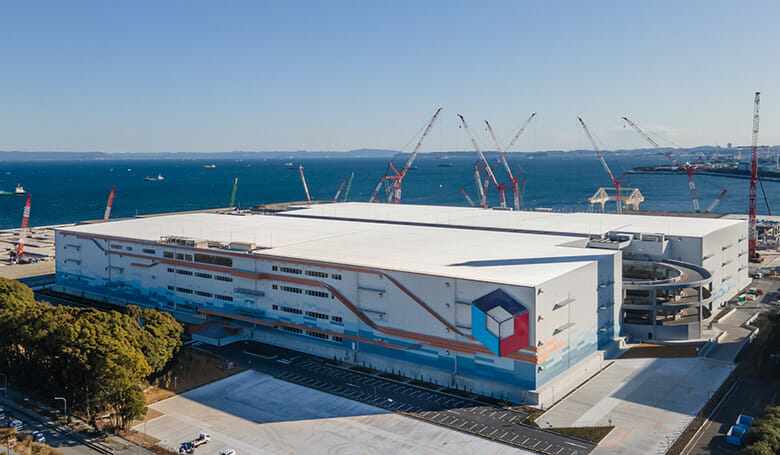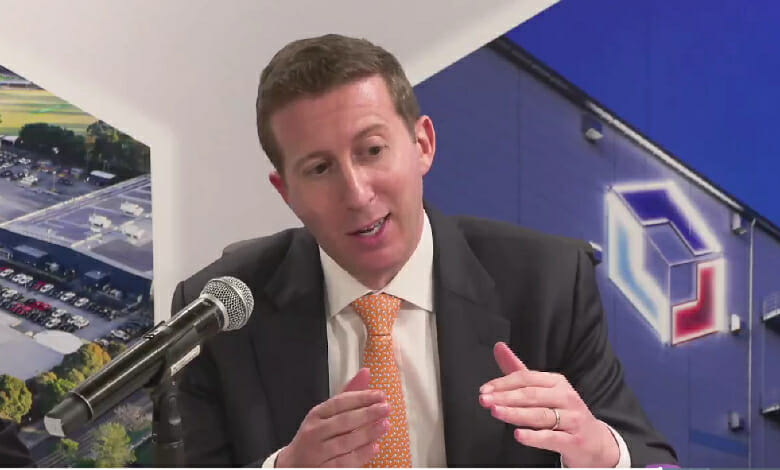
Last year, ESR completed construction of the first phase of its Yokohama Sachiura mega-project in Japan
Growth in fee income and disposals of non-core assets helped propel developer and fund manager ESR Group to a 10 percent increase in profit last year, despite challenging market conditions, according to financial results released by the company on Wednesday.
ESR’s earnings before interest, tax, depreciation and amortisation (EBITDA) jumped to $1.15 billion in 2022 from $1 billion a year earlier (for the company and its then soon-to-be-absorbed ARA Asset Management unit), as growth in fee income from its fund management business boosted overall group revenue to $821 million – up 7.1 percent from 2021.
Also contributing to the Hong Kong-listed group’s bottom line was a record $1.7 billion in sales of assets from the company’s balance sheet to ESR-managed funds, which was equal to three times the company’s typical annual target.
“Our earnings from the full year 2022 clearly demonstrate the strength and the underlying fundamentals of our new economy business across Asia Pacific,” ESR chairman Jeffrey Perlman said in an earnings webcast on Wednesday.
Perlman’s team also grew ESR’s assets under management by 11 percent year on year to an all-time high of $156 billion in 2022, after the company completed its $5.2 billion acquisition of ARA Asset Management and notched fundraising successes that expanded its cash for deployment to a record $19.9 billion.
Record Year
Fund management was ESR’s growth engine last year, with EBITDA attributable to the business rising 14.5 percent year-on-year to $568 million, equivalent to 44 percent of total earnings, thanks to increased recurring fee revenue as the company grew its assets under management.

Jeffrey Perlman laying out ESR’s 2023 plans during the webcast
In addition to the EBITDA growth, ESR’s profit after taxation and minority interests (PATMI) also rose 9.3 percent to $655 million last year from $599 million a year earlier. If not for the broad depreciation of most currencies in Asia Pacific versus the US dollar, the company said its EBITDA and PATMI last year would have grown by 20 percent and 24 percent, respectively.
The expansion in fund management income came despite pre-tax earnings from ESR’s investment properties falling by 12 percent last year to $374 million. After the decline, ESR’s earnings from investment properties still accounted for nearly 30 percent of the company’s overall EBITDA last year.
Perlman traced the drop in income from investment properties to divestments by the company to ESR-managed funds – led by the $720 million sale of a logistics portfolio in mainland China, as well as its sale of a $349-million stake in China Logistics Property Holdings.
The growth in earnings was helped along by ESR’s leasing of a record 4.6 million square metres (50 million square feet) of space last year, which the company attributed to strong demand from e-commerce and third-party logistics partner tenants. Across its Asia Pacific investment portfolio the shed specialist recorded 95 percent occupancy as of 31 December, with a weighted average term to lease expiry of 4.5 years.
On the development front, Warburg Pincus-invested ESR grew its workbook to $11.9 billion in project value last year, with development starts rising 20 percent to $6.5 billion in value and completions totalling $5.5 billion – an increase of 85 percent from 2021.
“Our development starts and completions have scaled substantially to reach new heights on the back of near zero vacancies as well as record leasing across our existing portfolio,” Perlman said. “We expect to add substantial starts and completions over the next 12 months with healthy development margins.
Upsizing Data Centre, SE Asia Funds
The company’s expansion can be linked in part to its success in raising $7.6 billion in fresh capital last year through 28 new and upsized mandates for ESR and its subsidiaries.
Among ESR’s fundraising milestones last year was a more than $1 billion first closing on its inaugural data centre fund in July with the company having announced in November that it had rounded up $1 billion for an ARA-led Infrastructure fund targeting projects in Southeast Asia.
Speaking in the same webcast, ESR group chief financial officer Ivan Lim said the group is targeting a final closing of its data centre fund in the second half, which could upsize that vehicle by $300 to 500 million. The company plans to seed the strategy with development projects capable of yielding 560 megawatts in IT load.
Lim said that, given strong demand from investors, ESR is also keen on upsizing its ASEAN infrastructure fund, with Perlman also expressing confidence in ESR’s prospects for this year.
“The group remains well-positioned to deliver long term growth and value for shareholders,” Perlman said. “We’re fortunate to enter 2023 from a position of fundamental strength with a well-capitalized balance sheet to take advantage of potential market dislocation, as we’ve seen in just the last 10 days alone, to hopefully seize on new opportunities.”
Shares in ESR rose to HK$13.44 on Wednesday prior to the release of its 2022 results. However, the stock price remains 33 percent below the HK$20.00 per share level it enjoyed after the August release of ESR’s financials for the first half of 2022, which showed a 15 percent hike in earnings from the same period a year earlier.
Note: This article has been updated to show that ESR’s PATMI in 2022 was $655 million following $599 million in 2021. An earlier version had those figures reversed. Mingtiandi regrets the error.
Leave a Reply